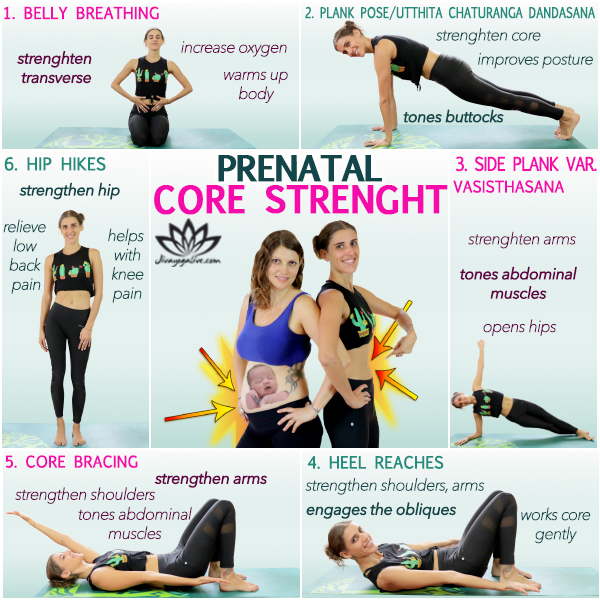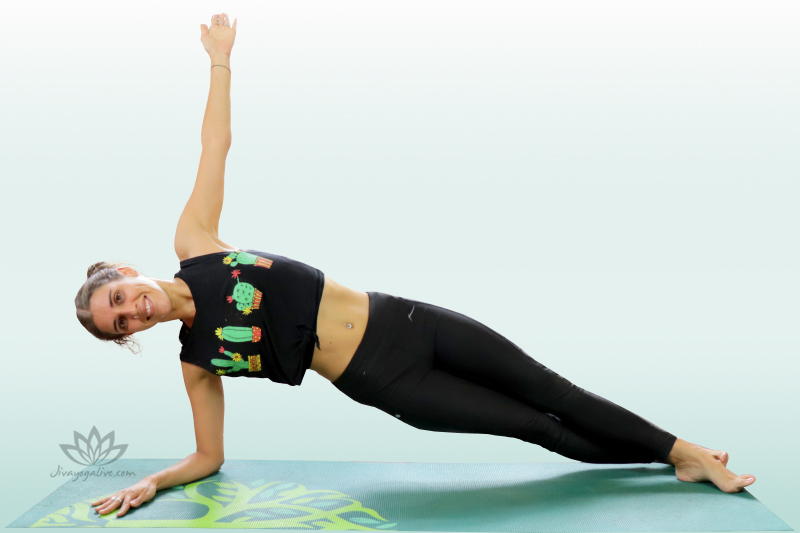When we think about core muscles, the first image that comes to mind is usually a sculpted six-pack. But your core is so much more than just the rectus abdominis. It includes a wide network of muscles that work together to support your posture, stabilize your thorax and pelvis, and generate internal pressure to support everyday functions like breathing, bowel movements—and yes, childbirth. That’s why safe core exercises for pregnancy are essential for supporting both your changing body and your baby throughout each trimester.
What Muscles Make Up the Core?
Your core muscles include:
-
Pelvic floor muscles
-
Transversus abdominis (TVA)
-
Internal and external obliques
-
Rectus abdominis
-
Erector spinae (back extensors)
-
Diaphragm
Together, these muscles create a strong, supportive unit essential during pregnancy.
Why Strong Core Muscles Matter During Pregnancy
Maintaining strong core muscles during pregnancy helps:
-
Align the pelvis, ribs, and spine
-
Support upright posture and body balance
-
Provide continence (your ability to hold in urine or bowel movements)
-
Prepare the body for labour and delivery, especially in the pushing phase
A well-functioning core supports your growing belly and helps manage increased pressure on your spine and pelvic floor. But, not all core exercises are safe during pregnancy—especially as your body changes.
Exercises to Avoid
As your belly grows, traditional crunches and sit-ups become uncomfortable and potentially harmful. Movements that compress your abdomen or require lying flat on your back for extended periods should be avoided after the first trimester.
Why?
-
They can place excess pressure on the abdominal wall
-
They may contribute to diastasis recti (separation of the abdominal muscles)
-
They may reduce blood flow by compressing the vena cava
Instead, opt for safe core exercises using a birthing ball, side-lying positions, or all-fours (quadruped) positions that support your alignment and comfort. Always listen to your body—if something doesn’t feel right, it probably isn’t.
Meet the Transversus Abdominis: Your “Baby Blanket”
The transversus abdominis (TVA) is the deepest layer of abdominal muscle. It wraps around your torso like a corset, connecting your spine, ribs, and hips. During pregnancy, it plays a vital role by supporting your expanding uterus—hence the nickname “baby blanket.”
And during labour, the TVA works with the uterus to generate pressure from the inside to help push the baby out. Think of it like preparing for a very important (and much bigger) bowel movement!
6 Easy Safe Core Exercises For Pregnancy Infographic

Belly Breathing
Sit in a comfortable position with your back straight and place your hands on your belly. With every inhalation, let your breath go down into your abdomen, allowing it to expand.
With every exhalation, draw your belly button in towards your spine, sucking up everything as much as you can. Repeat this for 10 to 20 breaths.
This gentle exercise will help to strengthen your transverse.

Plank Pose – Utthita Chaturanga Dandasana
From a Table Top position, with the wrists aligned with your shoulders, extend your feet back, lifting your body off the ground in a straight line.
Make sure your hips stay in alignment. If this is too uncomfortable for your wrists, you can do this exercise by placing your forearms on the floor instead. Breathe deeply in this posture for 30 seconds to 1 minute.
This will engage your back muscles, your shoulders, as well as your transverse.

Side Plank Pose Variation on elbows
Place your right forearm on the floor and extend your legs back, feet separated or stacked one on top of the other. Extend your left arm to the sky and keep your body in a lateral line. If this is too difficult, you can place your right knee on the floor to get more support.
Stay in this posture for 30 seconds up to 1 minute, breathing deeply. Then repeat on the other side.

Heel Reaches
Lay down on your back with your feet close to your hips and the knees pointing up. Raise your head and shoulders slightly off the ground and extend your arms by your sides, palms facing up. Reach towards your feet with your hands, alternating between each side. Reaching out on both side counts for one rep. Do 20 reps and take a break. Then repeat another 20 reps.
This exercise will engage your transverse and your obliques.

Core Bracing
Still laying down on the floor with the feet close to the hips, extend one arm by your side and one arm overhead. Brace your abdomen muscles by pushing the floor with your back and pulling your belly button in. Coordinate your respiration with the arm mouvement, keeping the arms extended.
Inhale switch the arms, the one by your side goes up, the one up comes down by your side. Exhale switch again. This is one rep. Do 20 reps.

Hip Hikes
Stand up with your feet hips-width apart. Without moving anything else, raise one hip up, trying to shorten as much as possible the space between your hip and your ribs.
Come back down and do the same motion on the other side. Perform 20 repetitions of this movement.

Featured Video: Safe Core Exercises For Pregnancy – prenatal core workout
Conclusion
Static holds, deep breathing and bracing will be the top safe core exercises for pregnancy.
This short workout works best when it is done frequently. You don’t need to workout one hour every day to make a difference.
Try to include in your schedule little 10, 15, 20 minute workouts to perform throughout your week. The ideal is to move everyday even if it is only for 10 minutes. With time, it will become a habit and you will be able to enjoy the benefits of an active lifestyle
About
Clementine
Clementine is a multi-style prenatal yoga teacher, world traveler and animal lover. She started yoga back in 2015 and fell in love with this beautiful ancient practice. Read More..

